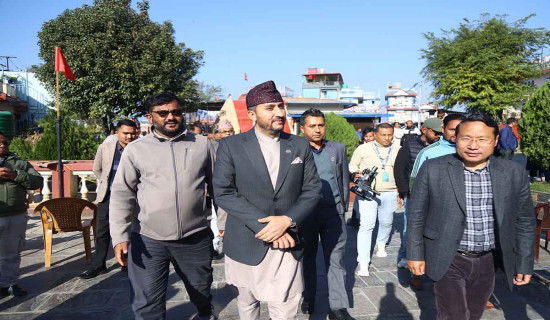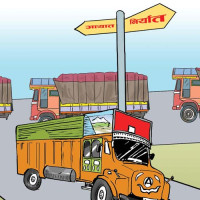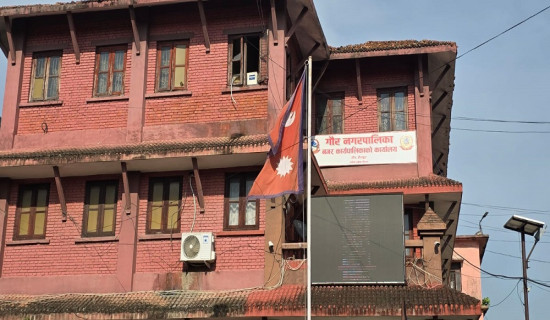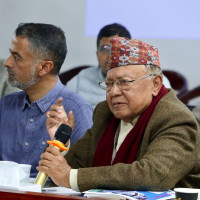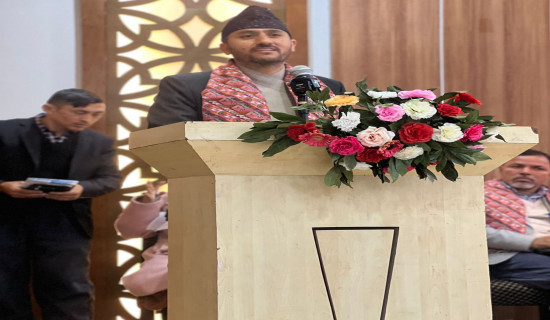- Wednesday, 24 December 2025
A Memorable Nature Walk
A metal road passes through a sleepy neighbourhood in Nagarjun Municipality. A couple of feet move up the slopes, albeit sluggishly, while a few go down, huffing and puffing and running a sweat. Is the road a lifeline that brings modernity or kills organicity, which has flourished in local communities for centuries? Is it an invention that brings hearts closer or drives us further and further apart from our traditional ways of life steeped in nature, pushing us towards climate catastrophes—and extinction? Is it something that turns the homo sapiens made of Panchatatwas—the five elements that are the earth, fire, water, wind, and ether—into beings made of iron and concrete? Why do we need these roads and a myriad other infrastructures that stand shakily on the lap of a disaster-prone and fragile Mother Nature, whereas all other beings on the blue planet can do without them? Is the road to modernity a one-way road? Is the return to nature virtually impossible for humanity? If yes, is the extinction of humanity inevitably unavoidable? Questions like these have become more relevant than ever before because the year 2023 is going to be the hottest year in 125,000 years. We don't know how many animal and plant species Planet Earth will lose because of the developed world's unwillingness to curb greenhouse gas (GHG) emissions. As for asphalt roads, they too cause temperatures to go up by preventing the earth’s surface from absorbing the heat.
On either side of the road stand a couple of traditional houses next to an advancing concrete jungle, posing a threat to the lush green woods that adorn this picturesque locale. On the lower flank, the woods are almost all gone, and their peers on the upper flank, dotted with gumbas and some private houses, appear to look upon the near extinction of their cousins with a sense of horror. At a distance, the Swayambhunath is deep in meditation. It's good for God in mad times like these, isn’t it? Navigating a narrow trail below, we reach a thatched house with two ferocious guards that bark at us nonstop. A woman responds to our call, and upon knowing that we want to buy flowers from her fields for Tihar, she asks us to come later in the day as the dewdrops will be gone by then. The maize fields in and around her house are a riot of colours—the blazing gold of the marigolds, the blue of the Makhmali (Gomphrena globosa), and several other hues and shades, along with the distinct green of the greens. Such is their magic that they can even inject colours into colorblindness, it appears.
Nestled within the thatched houses carved into the hillside, kitchen gardens boast orange and oversized Bhogatey fruit trees. Wrinkled grannies and grandpas, accompanied by ferocious dogs, rest on sunny varandas, gazing towards the sunset of their lives. By the roadside, an elderly granny with deep wrinkles awaits the takers of her greens while also managing her little mischief (her grandson, as yours truly came to know later), with his mom gone to run the errands. Who has the time to read into those wrinkles and get an idea of her long and hard journey of joy and sorrow? Close by, in front of a gumba, young women have their own street-side shop that offers a bunch of local products like chestnuts, chilies, cranberries, and beans. We buy a bit of everything, eager to get a taste of our ancestral home far off on the hills, and return home, navigating a cloud left by passing vehicles. In the afternoon, we return to pick up the blazing yellow flowers in the fields abuzz with honeybees and birds, even as the dogs continue to make it loud and clear that the ingress is simply unacceptable. A chat with the farmers—Babukaji Shrestha and his wife, a Tamang woman from the White Gumba area—brings us closer to Mother Earth and quite apart from all things concrete, cement, iron, steel, and plastic. Together, the two grow edibles like maize, millet, and greens on 18 annas of land close by their home and in three ropanis just a stone’s throw from their homestead. Irrigating these fields is no big deal, they say, thanks to clean and pure water channelled from the nearby woods, all for free. After a heartwarming conversation, we return to the concrete jungle, leaving our hearts in the locale abuzz with birds, bees, and butterflies, with a promise to return again and again for all things organic.
(The author is a freelancer.)



